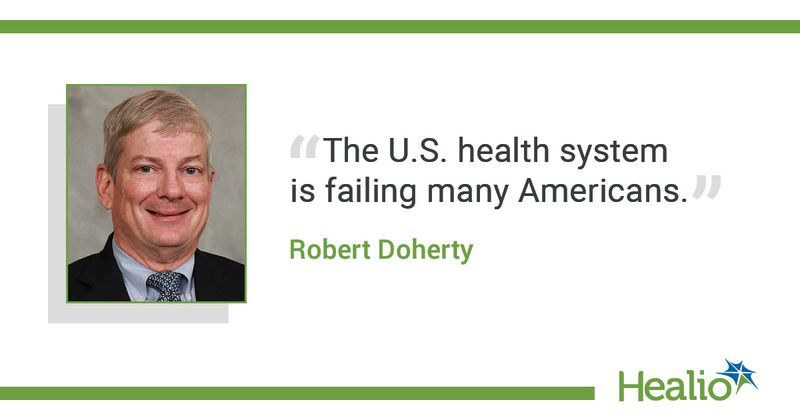‘Time to challenge the status quo’: ACP shares its plan to improve health care
Better health care benefits both patients and physicians. However, more efforts are needed to achieve this goal, according to a speaker at the ACP Internal Medicine Meeting.
Robert Doherty, the society’s senior vice president of government affairs and public policy, said an ACP survey revealed many problems with the United States health care system, including that it costs too much, leaves too many without coverage, undervalues primary care and undermines the physician-patient relationship.

“The U.S. health system is failing many Americans,” Doherty said. “America, it's time to challenge the status quo.”
He discussed a five-point plan that ACP launched in January 2020 to meet that challenge.
Ensure
The first part of ACP’s plan involves transitioning to a single-payer financing approach or a publicly financed coverage option, along with a regulated private health insurance industry, to ensure all Americans have health insurance coverage, according to Doherty.
“Both a single-payer and public choice models have advantages and disadvantages, but either way is better than our current system,” Doherty said.
Until such a transition can occur, President Joe Biden's American Rescue Plan Act supports many of strategies ACP had asked for, including incentives expand Medicaid, providing Medicaid recipients with postpartum coverage for 12 months after childbirth and increasing premium subsidies, according to Doherty.
Eliminate
The plan also calls for “immediate elimination of unnecessary, inefficient billing and reporting requirements and reducing administrative barriers,” Doherty said.
The financial savings from this — which Doherty said could be as much as $628 billion — should be redirected to health care coverage and researching interventions that successfully address the social determinants of health. Removing the obstacles, billing problems and unnecessary reports could also provide physicians as many as 60 more hours weekly to spend with their patients, he added.
Invest
Studies show primary care is associated with a decrease in health expenditures, higher satisfaction, fewer hospitalizations visits and lower mortality. And yet, only 5% to 7% of health care spending is invested in primary care, according to Doherty.
Thus, he called for “greater investments in primary and comprehensive care by physician-led teams.”
Challenge
Doherty said that the next part of the plan is to rise to the challenge of addressing discrimination, racism and social factors that are associated with poor health outcomes. This will require more investments in the country’s public health infrastructure, research and policy interventions.
“Everyone must have access to access to affordable coverage and health care and not be discriminated against,” Doherty said.
Prioritize
The last part of the plan is to prioritize public health to address “current and emerging challenges,” Doherty said.
“Think for a magic moment if ACP’s plan for health care was in place now,” Doherty said. “No one would have lost health insurance because they lost a job. No one would have been unable to afford testing.”
Prioritizing public health could also help address gun violence and climate change, he said.
Call to action
Doherty ended his presentation by encouraging physicians to support the plan, saying the need for it is “even more true today” than when it was first introduced 15 months ago.
“Better is possible and ACP’s vision shows the way,” he said.

